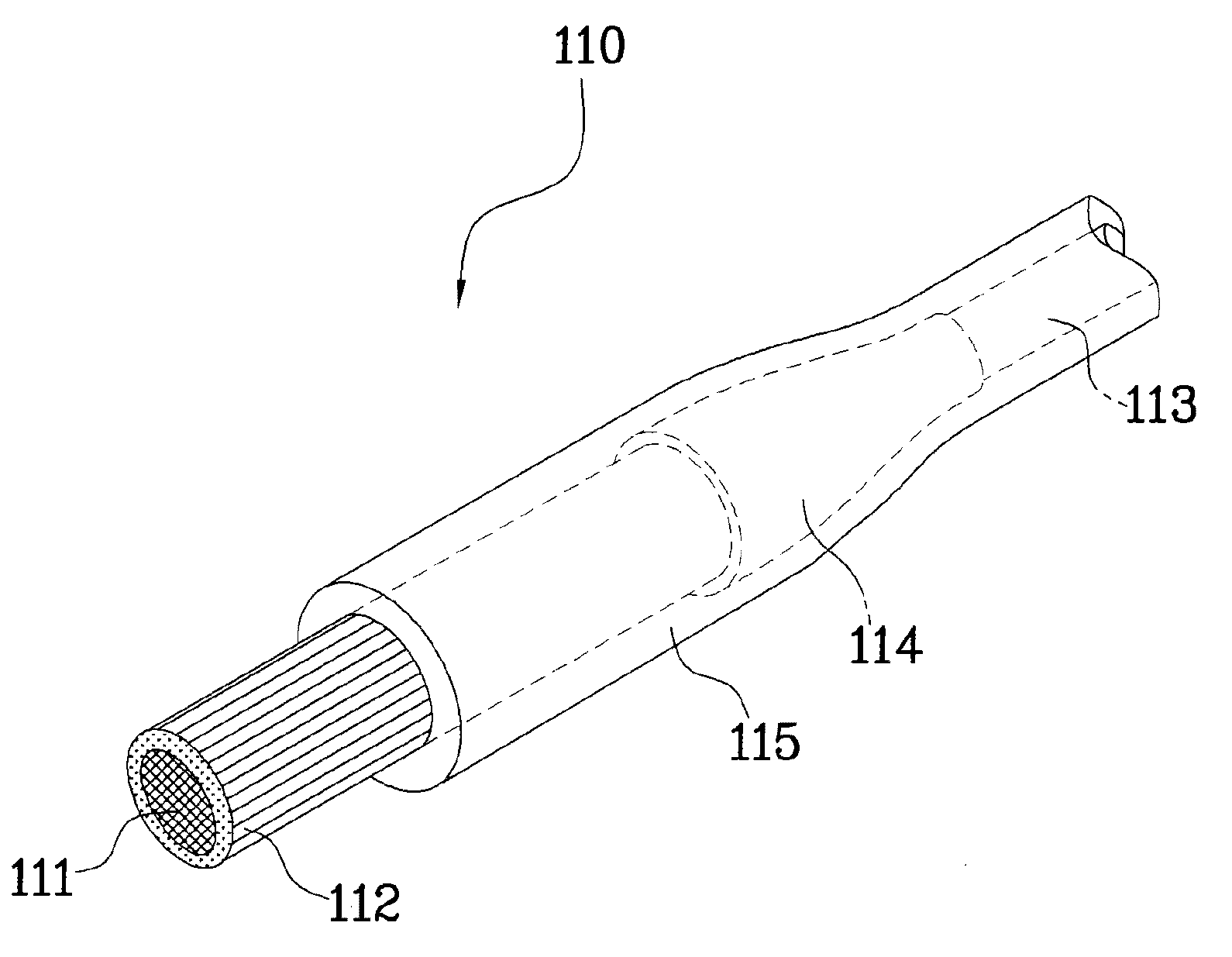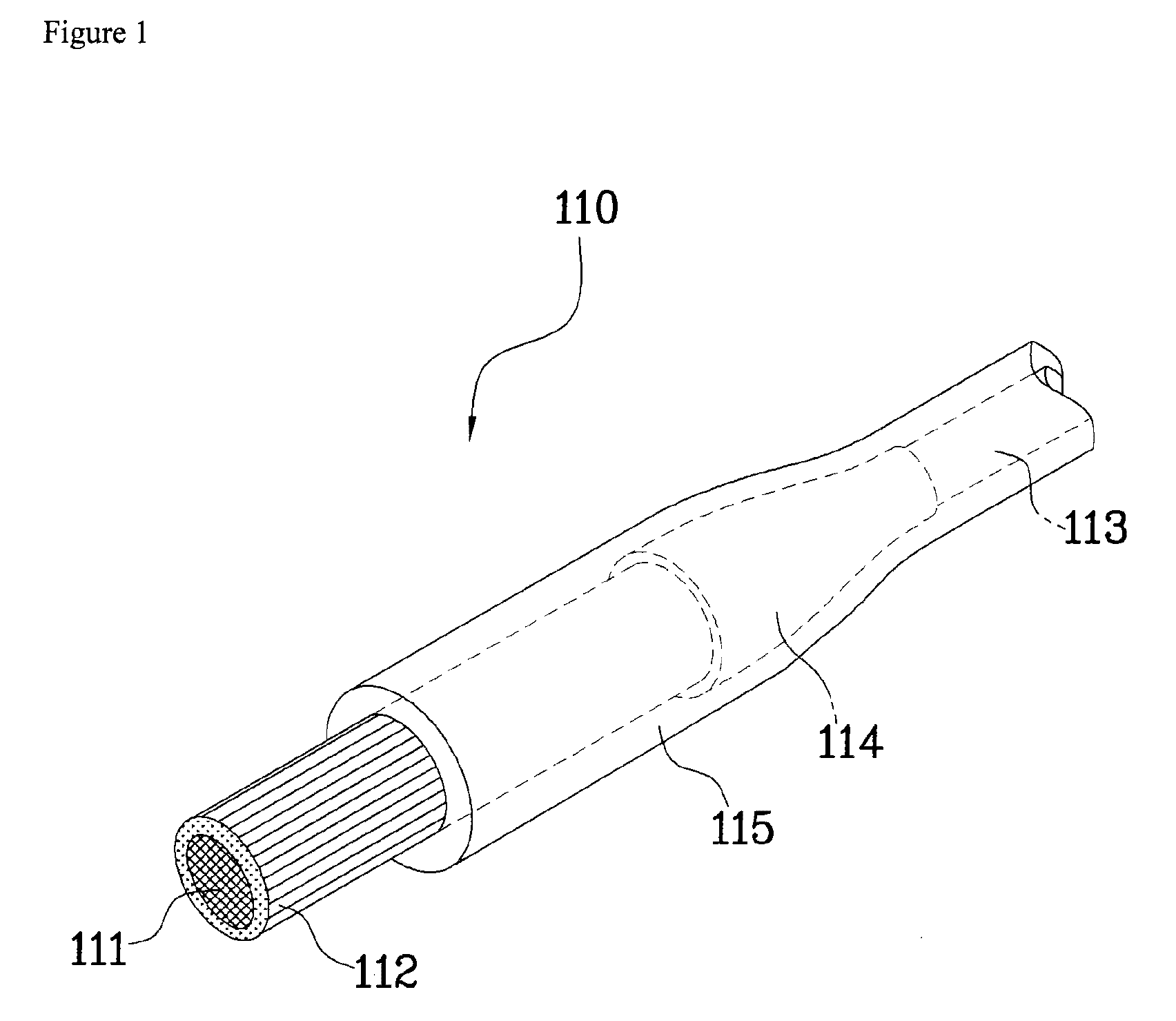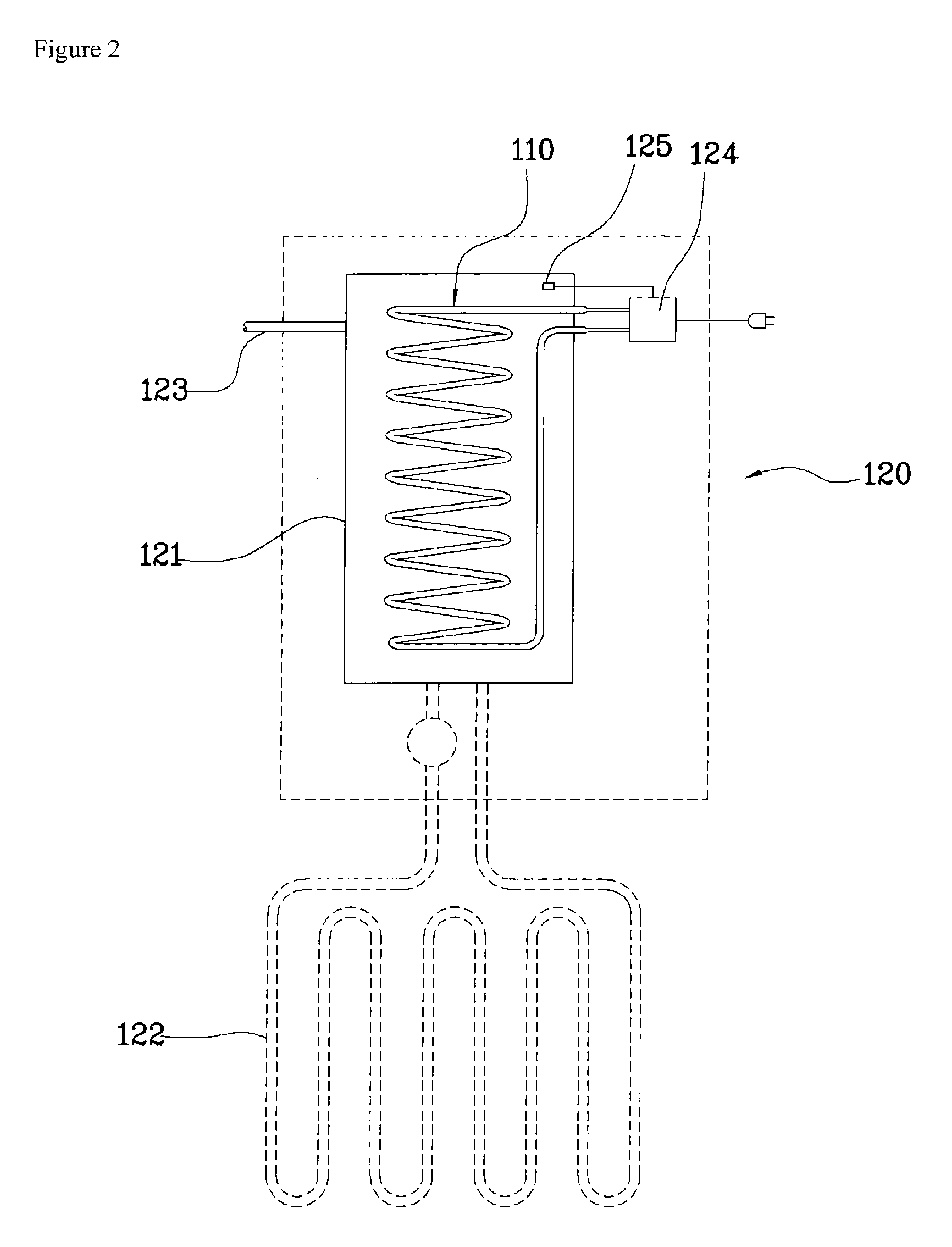Carbon fiber heating source and heating system using the same
a technology of carbon fiber and heating source, which is applied in the direction of heating type, lighting and heating apparatus, and heating arrangement, etc., can solve the problems of increasing the cost of raw materials, increasing the cost of boilers or air heaters based on coal or petroleum, and high electric power consumption, so as to achieve high energy efficiency, not broken or damaged, and high tensile strength
- Summary
- Abstract
- Description
- Claims
- Application Information
AI Technical Summary
Benefits of technology
Problems solved by technology
Method used
Image
Examples
Embodiment Construction
[0045]The advantages, features and aspects of the invention will become apparent from the following description of the embodiments with reference to the accompanying drawings, which is set forth hereinafter.
[0046]FIG. 1 is a perspective view illustrating a carbon fiber heat emitting source according to one embodiment of the present invention.
[0047]As shown in FIG. 1, the carbon fiber heat emitting source 110 is formed by providing a bundle of two or more strands of carbon fibers 111 emitting heat at high temperature upon the application of electricity and having a predetermined length. When providing a bundle of carbon fibers 111, a predetermined amount of glass fibers 112 having the same length are combined with the carbon fibers 111.
[0048]According to the combination of the carbon fibers 111 with the glass fibers 112, the glass fibers 112 having high tensile strength against the external force, including tension or bending force applied to either or both sides of the carbon fibers...
PUM
| Property | Measurement | Unit |
|---|---|---|
| Temperature | aaaaa | aaaaa |
| Thickness | aaaaa | aaaaa |
| Thickness | aaaaa | aaaaa |
Abstract
Description
Claims
Application Information
 Login to View More
Login to View More - R&D
- Intellectual Property
- Life Sciences
- Materials
- Tech Scout
- Unparalleled Data Quality
- Higher Quality Content
- 60% Fewer Hallucinations
Browse by: Latest US Patents, China's latest patents, Technical Efficacy Thesaurus, Application Domain, Technology Topic, Popular Technical Reports.
© 2025 PatSnap. All rights reserved.Legal|Privacy policy|Modern Slavery Act Transparency Statement|Sitemap|About US| Contact US: help@patsnap.com



